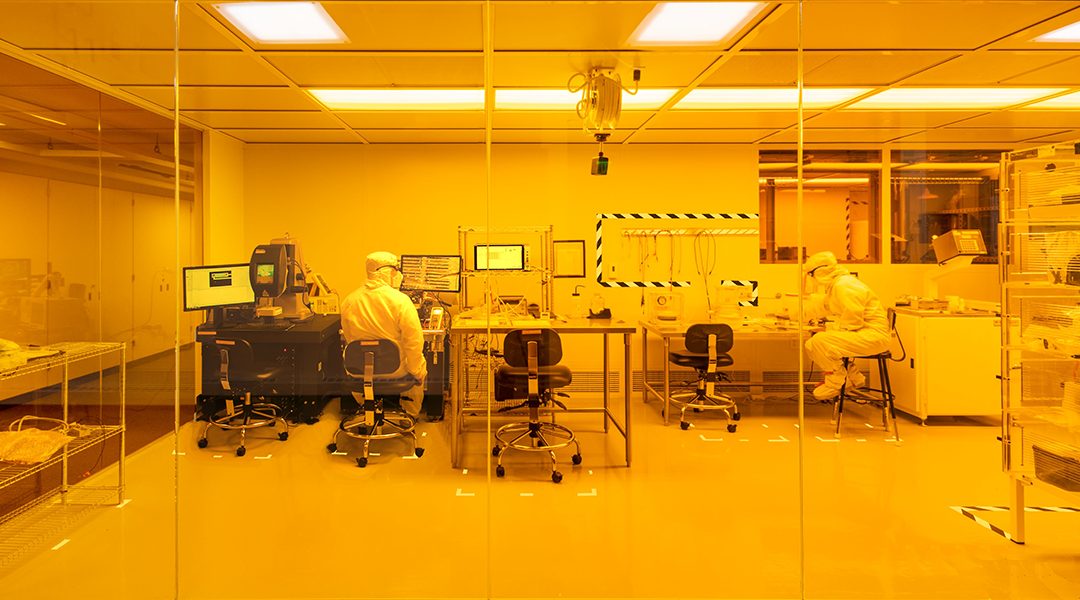The best things in life are never achieved easily. They require passion, compassion, vision, diligent and cooperative work, patience, endurance, and of course, effective management. The research conducted at the MIT Media Lab’s Conformable Decoders lab is very complicated, and the upkeep can be quite challenging. The motivation for becoming more organized stems from a desire to reduce inefficiencies and potential safety risks, among other variables.
Inefficiencies hurt the research team in many ways, from time spent on maintenance, to supplies running out (literally during the middle of an experiment!), to lost productivity when researchers can’t find the tools they need. Potential safety risks associated with highly complex research equipment and the use of numerous chemicals range from “pinch-points” all the way to those defined as “immediately dangerous to life or health (IDLH).””
“In addition,” says group head Canan Dagdeviren, “our fast-paced group has many other critical variables to consider. We have more than a dozen researchers and personnel working in a cleanroom laboratory space of approximately 1000 sq. ft [93 sq. m] amidst lots of equipment, materials, and supplies. So, how do we balance these competing priorities in this complex research environment?”
The initial efforts focused on finding a robust methodology in order to streamline processes, effectively utilizing laboratory space while addressing all of the lab’s needs and priorities. The goal was to become more efficient with an increase in productivity and reduction in resource consumption: to utilize all of the lab’s resources including time, supplies, and other lab expenses while enhancing the safety culture and balancing priorities.
This ambitious goal led the group to the 5S methodology. 5S methodology is an organization system that uses five guiding practices to organize a work space for efficiency and effectiveness: sort, set in order, shine, standardize, and sustain. “Although the system originated in the Japanese manufacturing industry, we found that the lean principles behind it were exactly what our cleanroom needed in order to function smoothly,” says Dagdeviren.
“Lean” practices can be adopted to any environment — from lab and office spaces to specific research areas such as the work bench or chemical wet bench. According to Tolga Durak, managing director of MIT Environment, Health & Safety (EHS), “The lab successfully implemented the Lean Practices, including 5S organizational methodology, through a partnership with MIT EHS.” Since the initial implementation, the lab also has reaped the benefits in many different forms: higher efficiency, cost savings on resource consumption, reduction in lab upkeep requirements, seamless safety compliance, and more — all while achieving ambitious research goals.
A standout feature is that the method is primarily visual in nature: 5S uses color-mapping to show function and placement, with the added benefit of reducing the amount of “brain drain” associated with a specific task. There is no question of where a piece of equipment should go or what areas might contain hazardous chemicals, and ultimately, everything is clearly marked and easy to find. “It really makes the working environment more intuitive and easy to follow,” says David Sadat, the Senior Lab Manager of Conformable Decoders Research Group.
Having an organized lab space provides a peaceful environment for researchers as they can better focus on their work. The fewer decisions and calculations that one has to make while performing a task, the more efficient this task becomes. Although searching for missing tools may only take a few minutes, the researcher’s focus is decreased. Furthermore, 5S makes lab equipment easier to operate, highlighting critical areas as the environment becomes intuitive.
Since implementation, this methodology has exceeded the initial goals in many ways. The recent COVID-19 pandemic has been one such instance that truly showcases its benefits. “Unlike many other labs on campus, when faced with the emergency shutdown situation, the group had the unique ability to safely and systematically ramp-down in only about 15 minutes,” says Durak. Due to the organized and visual nature of the system, it took only a few minutes of checking for visual cues in and around the cleanroom to determine that they were all clear. This lifted a huge burden off the shoulders of group members during an extremely stressful time, allowing them to focus on what was most important: the health and safety of the group and larger MIT Media Lab community.
Throughout this project, it became apparent that the efforts expanded beyond the activities outlined by the 5S methodology. “Maintaining regulatory compliance and providing an environment where all lab users are assured of their well-being through integrated safety culture also became an expectation of the daily operations as well as the ethos of the lab,” says Durak.
This distinction warranted the addition of the 6th “S” in order to signify “safety” as a critical requirement under the lean lab framework while symbolizing the strong partnership between the two entities. Regardless of where each lab finds the most value, there is no denying that these lean lab principles can provide numerous distinct benefits.
Written by: Canan Dagdeviren[1], Tolga Durak[2], David Sadat[3]
[1] Media Lab, Massachusetts Institute of Technology, Cambridge, MA, 02139 USA; Email: [email protected]
[2]Department of Environment, Health & Safety, Massachusetts Institute of Technology, Cambridge, MA 02139 USA
[3] Media Lab, Massachusetts Institute of Technology, Cambridge, MA 02139 USA
Reference: Canan Dagdeviren, Tolga Durak, David Sadat. ‘Research Resiliency through Lean Labs.’ Advanced Intelligent Systems (2020). DOI: 10.1002/aisy.202000074

















